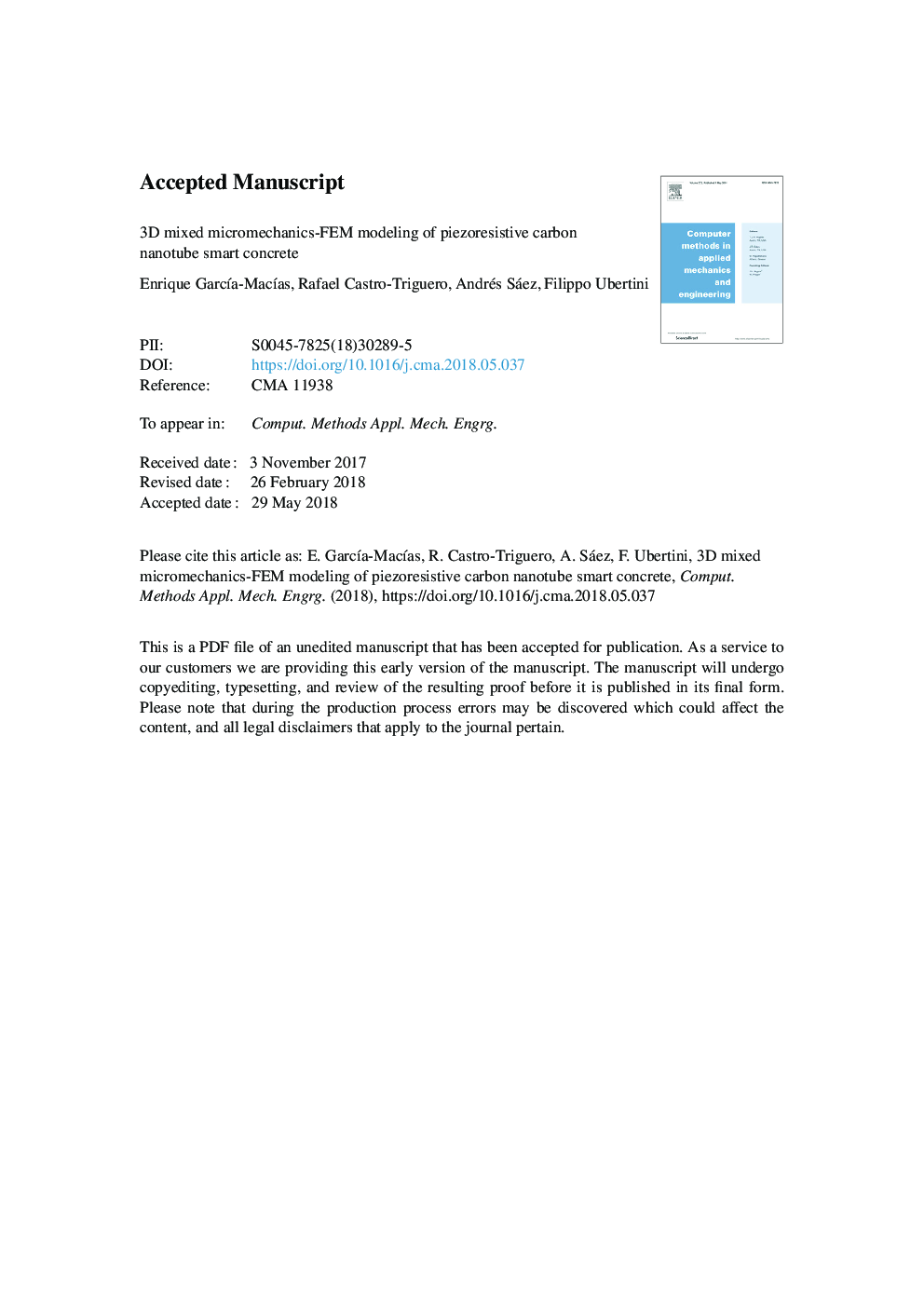| Article ID | Journal | Published Year | Pages | File Type |
|---|---|---|---|---|
| 6915315 | Computer Methods in Applied Mechanics and Engineering | 2018 | 30 Pages |
Abstract
Within the novel approach for structural health monitoring of civil engineering structures based on smart self-sensing structural materials, Carbon NanoTube (CNT)-reinforced cement-based composites, often termed “smart concretes”, have drawn rising interest. These composites exhibit self-sensing capabilities resulting in measurable variations of their electrical properties under applied mechanical deformations. This, along with the similarity between these composites and conventional structural concrete, makes it possible to devise cost-efficient distributed monitoring systems for large-scale Reinforced Concrete (RC) structures. While several papers in the literature have focused on pilot applications of smart concrete strain sensors embedded into large RC components, the response of these sensors is not yet fully understood at the fundamental physical level and, as a consequence, their output is not properly interpreted. In order to shed some light on this issue, previous work by the authors focused on laterally unconstrained uni-axial loading conditions. This work extends the previous studies by presenting a mixed micromechanics and finite element approach for the analysis of CNT-reinforced composites subjected to arbitrary strain states. The two mechanisms that contribute to the electrical conductivity of CNT-reinforced composites, namely electron hopping and conductive networking, are contemplated within a percolation framework in the micromechanics model. On the basis of the micromechanics model, the 3D piezoresistivity matrix is determined, for the first time in the literature, by means of virtual dilation and distortion tests. Afterwards, the electro-mechanical modeling of three-dimensional composite elements is conducted by a multi-physics finite element code. The potential of the presented approach is illustrated by extensive parametric analyses, as well as a comparison against experimental data, including application of the mixed micromechanics-finite-element multi-physics formulation for electro-mechanical modeling of three-dimensional elements.
Keywords
Related Topics
Physical Sciences and Engineering
Computer Science
Computer Science Applications
Authors
Enrique GarcÃa-MacÃas, Rafael Castro-Triguero, Andrés Sáez, Filippo Ubertini,
